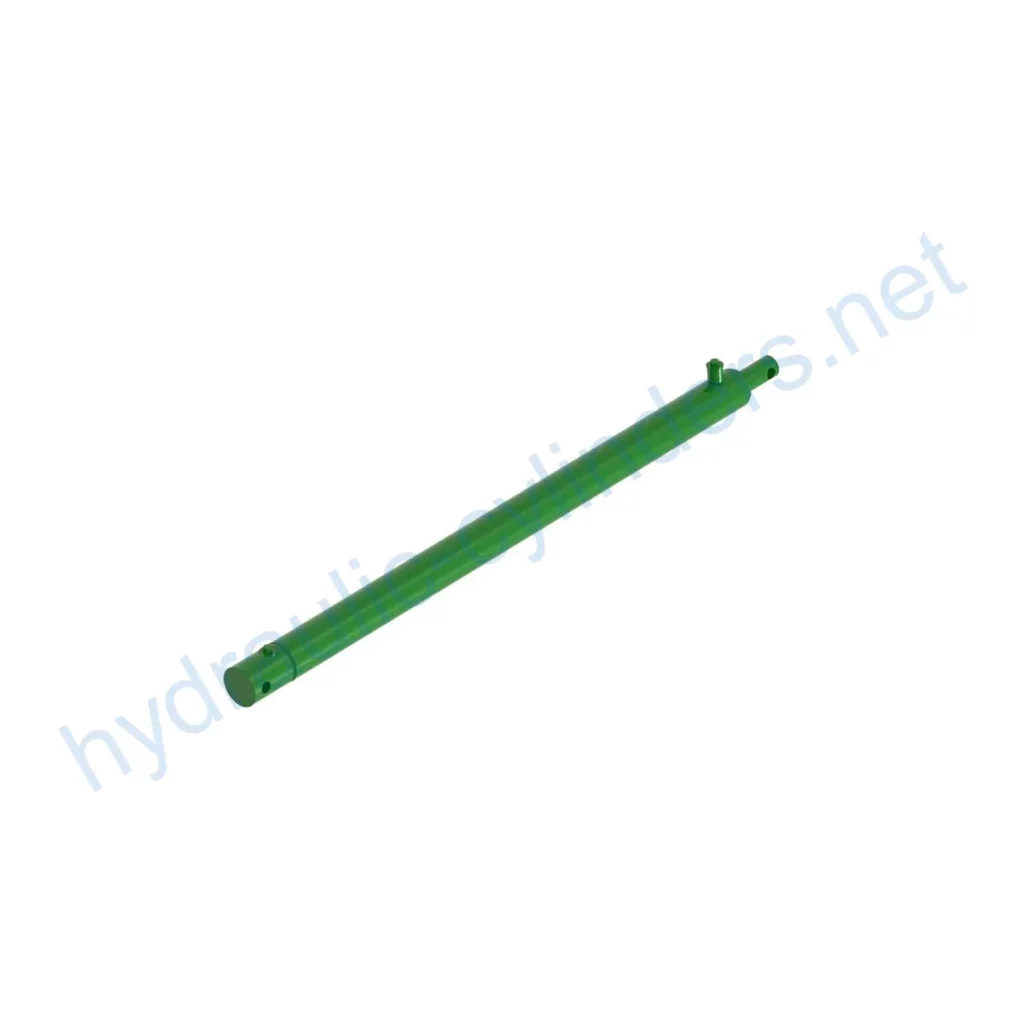Replacement Of AH221277 Hydraulic Cylinder
The Replacement Of AH221277 Hydraulic Cylinder is a vital component used in various hydraulic systems. Designed to replace damaged or worn-out cylinders, it plays a crucial role in restoring the normal operation of equipment and ensuring optimal performance in different applications.
Specifications
- Weight: 27.17 lb
- Height: 2.25 in
- Width: 3.5 in
- Length: 41 in
Model: 435 535
Features
- Improved Equipment Performance: Replacing damaged or worn hydraulic cylinders can restore the equipment’s operational capabilities, ensuring it performs efficiently in various applications.
- Enhanced Safety: Regularly replacing hydraulic cylinders reduces the safety risks associated with cylinder failures, ensuring the well-being of both operators and equipment.
- Overload Protection: New cylinder designs often incorporate better overload protection mechanisms, enhancing overall safety.
- Quick Installation: Modern hydraulic cylinders are designed for easy installation and replacement, minimizing downtime.
- Standardized Components: Many hydraulic cylinders are standardized products, making it easier to obtain replacement parts in the market.
Our company specializes in the production of replacement hydraulic cylinders that perfectly match these specifications. We offer high-quality products that can seamlessly replace the original cylinders.
Applications
- Excavators: Hydraulic cylinders in excavator arms or buckets may get damaged due to prolonged use or overload, requiring replacement to restore proper operation.
- Cranes: Hydraulic cylinders in crane boom systems may experience wear during frequent lifting and lowering processes, necessitating regular replacement for safety assurance.
- Tractors: Hydraulic cylinders in front-end loader systems of tractors may develop leaks or performance degradation during continuous lifting and tilting operations, requiring replacement.
- Harvesters: Hydraulic cylinders in harvesters endure high pressure during the harvesting process, and fatigue may lead to cylinder damage, requiring timely replacement to maintain operational efficiency.
- Automated Production Lines: Hydraulic cylinders are used to control robotic arms and other automated equipment. Cylinder failures can significantly impact production efficiency, and prompt replacement is essential.
Maintenance
To ensure the longevity of hydraulic cylinders, regular maintenance tasks should be performed:
- Periodic Inspections: Regularly inspecting cylinders helps identify potential issues and prevent major failures.
- Proper Lubrication: Adequate lubrication is vital to minimize wear and ensure smooth operation. Use appropriate hydraulic oil and follow recommended lubrication intervals.
- Seal Replacement: Inspecting and replacing worn seals helps maintain the cylinder’s integrity and prevent leaks.
- Calibration Checks: Periodically calibrate the cylinder to ensure accurate performance and alignment with other system components.
Safety Considerations and Environmental Factors
When using hydraulic cylinders, it is crucial to prioritize safety measures. Employing proper safety precautions reduces the risk of accidents and injuries. Additionally, considering environmental factors when selecting and using cylinders helps minimize any negative impact on the surroundings.
Troubleshooting and Common Issues
Hydraulic cylinders may experience various problems, including:
- Leakage
- Poor performance
- Inconsistent operation
- Failure to extend or retract
To address these issues:
- Inspect all hydraulic connections for leaks or loose fittings.
- Check hydraulic fluid levels and quality. Replace or filter the fluid as necessary.
- Examine the cylinder for any obstructions or damage that may hinder proper functioning.
- If the issue persists, consult a professional for further diagnosis and repair.
Preventive Measures
Preventive maintenance can significantly reduce potential problems with hydraulic cylinders:
- Follow recommended maintenance schedules and procedures.
- Properly train personnel on cylinder operation and maintenance.
- Ensure adequate storage conditions to prevent contamination or damage.
- Use quality replacement parts and components from reputable suppliers.
Design Considerations and Selection Criteria
When choosing a hydraulic cylinder, several factors should be considered:
- Load-bearing Capacity: The cylinder must be capable of handling the intended load without compromising safety or performance.
- Sealing and Durability: High-quality seals and durable construction ensure long-lasting and reliable operation.
- Safety: Consider safety features such as overload protection mechanisms and fail-safe systems.
- Ease of Maintenance: Opt for cylinders with easy access to components for maintenance and repairs.
Sealing and Lubrication
Proper sealing and lubrication are essential for optimal cylinder performance:
- Various sealing components, including piston seals and rod seals, should be made of wear-resistant materials like polyurethane or nitrile rubber.
- Cylinder bodies and threaded ends should undergo precise surface treatments to enhance wear resistance.
- Regularly lubricate the cylinder using the recommended hydraulic oil to ensure smooth operation and reduce friction.
Periodic Inspections and Preventive Maintenance
Regular inspections and preventive maintenance tasks are crucial for maintaining hydraulic cylinder performance:
- Ensure proper installation, lubrication, and adjustment for optimal performance.
- During installation, provide guidance on aligning the cylinder correctly.
- Recommend using suitable mounting brackets or supports to secure the cylinder firmly.
- Advise on inspection, repair, and replacement procedures to enhance the cylinder’s lifespan.
- Offer replacement parts and rebuilding services to improve the longevity of the hydraulic cylinder.
Safety Considerations and Environmental Factors
When working with hydraulic cylinders, safety measures are of utmost importance. Adhering to proper safety protocols reduces the risk of accidents and ensures a secure working environment. Additionally, considering environmental factors during cylinder usage helps minimize any negative impact on the surroundings.
Troubleshooting and Common Issues
Some common hydraulic cylinder issues include:
- Leakage
- Poor performance
- Inconsistent operation
- Failure to extend or retract
To address these

